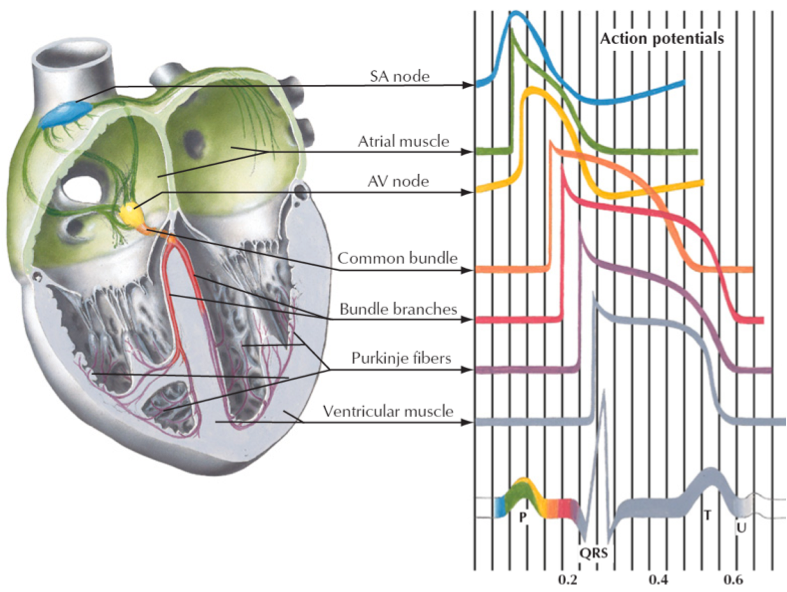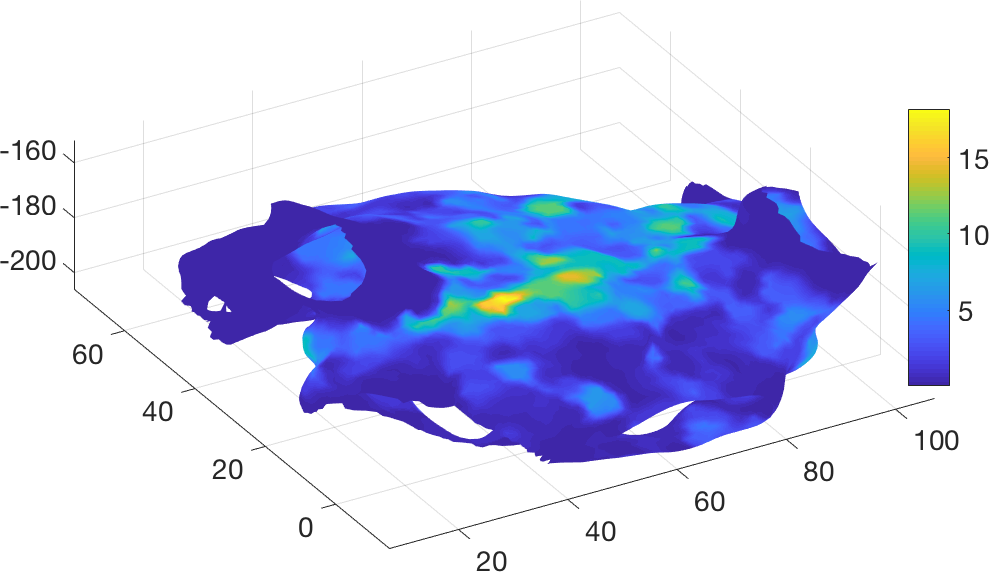In the figure on the right, you see that the integrated ECG actually corresponds to the sum of the electrical activity coming from the different myocytes forming the atria and ventricles. From the point of view of signal analysis, the ECG gives us incomplete information from the electrical status of the heart. To infer the complete "real" state of the heart from the ECG is typically a mathematically "ill-posed" problem and it requires special handling to be solved. In order to get better information from the ECG, I use new algorithms that are beyond the linear tools (Fourier analysis and correlation functions), like Lyapunov spectrum, signal entropy and fractal dimension (see this article from a Master student 2013 about the influence of ageing in the ECG morphology). Note that MD cardiologists are trained to solve this difficult problem of inferring the state of the heart from an examination of the patient's ECG.

